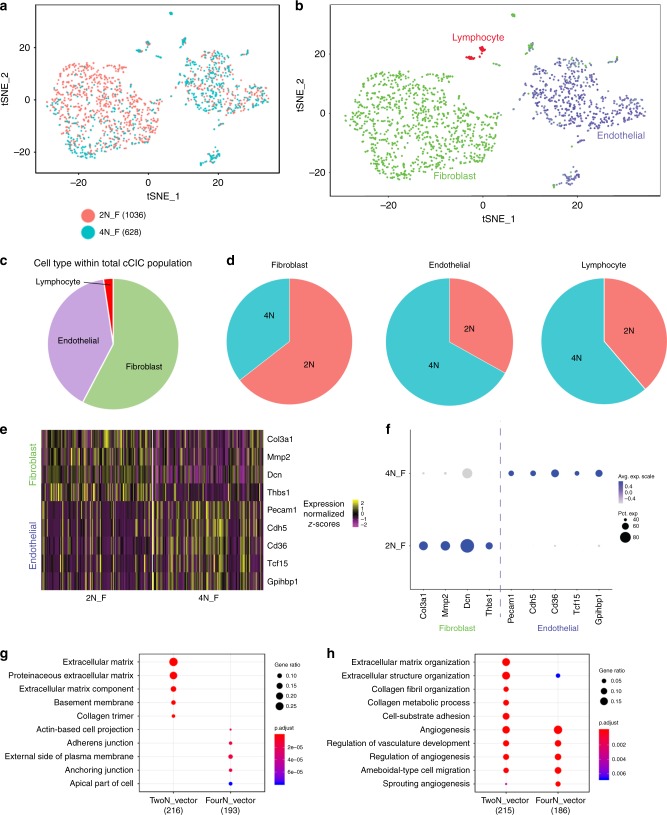Fig. 6.
Distinct population characteristics of diploid versus tetraploid fresh murine Lin–c-kit+ isolates revealed by single-cell RNA sequencing (scRNA-Seq). Freshly isolated, viable diploid and tetraploid Lin–ckit+ CICs from adult FVB mouse were analyzed using scRNA-Seq. The diploid population (salmon) predominately cluster together, while tetraploid cCICs (teal) cluster in a different cell group (a; cells analyzed per group identified next to ploidy state). Identification of the cell populations demonstrates that cCICs are a heterogeneous population of fibroblast, endothelial, and lymphocyte cells (b). Percent of cCICs based on cell type (c). Percent of each cell type based on ploidy content (d). Heatmap of upregulated differentially expressed genes (DEGs) specific to endothelial and fibroblast markers confirm transcriptional differences in murine-derived diploid (2N_F) and tetraploid populations (4N_F) (e). These DEGs are also displayed in frequency and expression level between the diploid and tetraploid cCICs (f). The top ten gene ontology (GO) terms upregulated in the 2N population display extracellular matrix cellular components, while the 4N population cellular component is junction oriented (g). The top ten GO terms by biological process upregulated in the 2N population represent both extracellular matrix and angiogenesis processes, while the 4N population is primarily angiogenesis oriented (h)

